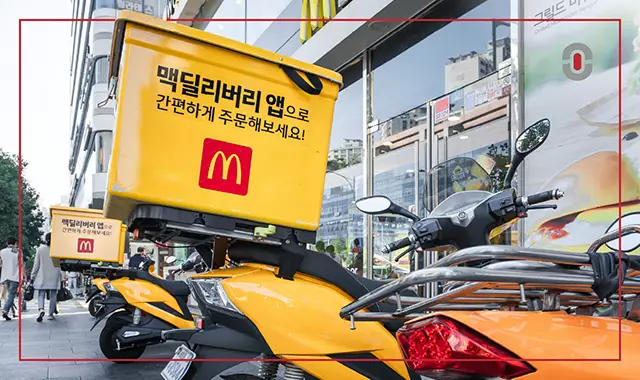The vast and diverse market landscape of Asia, with its many countries, languages, and cultures.
Introduce the concept of localization: moving beyond translation to create content and experiences that resonate with local customs, preferences, and values.
Entering any market can pose a huge challenge for businesses, and the Asian market is no exception. Asia is the world’s most populated and diverse continent, with over 4 billion people. Therefore, entering the Asian market in countries like China, Korea, Japan or India is a crucial step for brands if they want to become global.
Entering another market means that businesses need to modify their content such as ads, product descriptions and marketing campaigns to fit the local audience. That usually involves translating and localizing the content. Localization is a term that refers to the process of adapting content to fit cultural, linguistic, and technical requirements of a specific region. It’s a crucial step in creating a message that sticks with the local audience, and actually aligns with the culture.
Why Generic Localization Isn’t Enough in Asia
Generic translations are suitable for certain types of content such as general guides, for example, but when it comes to marketing campaigns, ads and any type of creative content they can miss the nuances that make the content resonate with local audiences. Marketing campaigns are the result of rigorous research into the local consumer’s behavior, needs and demands. That being said, tailoring a company’s messaging to match with the target audience’s culture is a crucial step in entering any new market.
For example, a product that works well in Thailand, may not work well in Japan due to cultural reasons. Japanese convenience store food works best in Japan, compared to Thailand. In a survey, some Thai consumers felt that Japanese packaged food does not look healthy, and they preferred to eat fresh food at home. Others, however, mentioned that the packaging does not seem appealing. Knowing that, marketers can use the information to work on a new packaging with messages that will work better on Thai consumers.
Cultural Sensitivity in Localization
Understanding local culture is a crucial step into entering the market. Businesses need to thoroughly research about preferred colors, customs, values, and even local celebrities that may serve as brand ambassadors. Adapting the marketing efforts or products to suit the local audience and culture is a necessary step into entering and becoming successful in a foreign market.
Failing to do so can make a business not only not succeed in a foreign market but even attract a scandal. A well-known example for this is the infamous Dolce & Gabanna’s ad campaign in China, which depicted a Chinese model eating spaghetti with chopsticks. That ad attracted a huge controversy and outrage, and the brand is still struggling to win back the Chinese customers.
These examples highlight how important cultural sensitivity is, and how one miscalculation can cost a brand their reputation and efforts to build a connection with the local audience. Adapting marketing strategies, products and services to fit the culture of each region can foster trust, brand loyalty, and long-term success.
The Power of Personalization in Localization
Personalized localization is the combination of personalization and localization, by creating hyper-relevant experience tailored to the client and individual users. Personalized localization combines consumer-specific data such as preferences, customer behaviour and history with regional insights such as culture, customs, traditions, language and even climate to deliver culturally authentic messages.
Personalized localization can make customers feel valued and foster deeper engagement as well as long-term brand loyalty. Tailoring a brand’s marketing messages, content, and product offerings helps brands foster a positive relationship with their new potential customers. For example, a global fashion brand should adjust their sizing charts to match with the sizes in Asian countries. This will show that the brand cares about its customers, and it strives to improve customer satisfaction. Personalized localization does not only give a competitive advantage, it’s a necessity for brands looking to succeed in Asia’s diverse and dynamic markets.
Successful Custom Localization Strategies Across Asia
China: Leveraging Local Platforms and Cultural Nuances
In China, an effective localization includes integrating local digital platforms and aligning content with the local culture. WeChat is one of the most popular platforms with over a billion active users, which has messaging, social network and e-commerce. Putting a brand’s content on WeChat will engage customers and establish the brand’s credibility in China. It’s important to offer content in Simplified Chinese as that will engage the audience and demonstrate cultural respect. Using Mandarin for marketing content on WeChat or any other platform will entail developing a wholly new marketing strategy: new keywords, banners, creatives, logos, and visuals to be considered highly relevant.
It’s also important to understand the local trends and customs, such as the significance of the Lunar New Year, the Cherry blossoms in Spring or symbolism in colors. Creating marketing campaigns that use traditional symbols such as the color red or gold hues in marketing can evoke customer respect and loyalty.
Japan: Emphasizing Quality and Cultural Etiquette
In Japan, marketing messages are often implicit and understanding is usually derived from context. Therefore, brands should really tailor their content to emphasize on the quality of their product and respect for the culture. Japanese customers value attention to detail and craftsmanship, so marketing materials should reflect these demands. For example, Dyson created a special smaller sized vacuum for the Japanese market to reflect on the fact that most Japanese customers live in smaller homes and will probably need a smaller device. Using formal language, and honoring social norms such as bowing can also impact the brand’s image. Another important thing is incorporating popular aesthetics – such as imagery of Cherry blossoms during Spring. Many brands create special Cherry blossom collections that help them blend with the local culture and enhance the brand’s exposure.
Southeast Asia: Integrating Informal Language and Community Values
Southeast Asia is another important market for global business. Southeast Asia encompasses countries like Thailand, Indonesia, and Vietnam and is characterized by diverse cultures and vibrant. Each market is diverse and different, and thus requires different strategies when it comes to expanding businesses. It is essential to understand the local languages, and even use dialects where needed. This will create a sense of familiarity and relatability. It’s also crucial to understand the local culture, such as popular festivals or regional celebrities, which can further enhance your brand exposure. Highlighting community values, such as collective well-being and social harmony, resonates deeply with consumers in this region. For example, campaigns that emphasize family togetherness during festive seasons or community support initiatives can foster positive brand associations and loyalty.
The Role of Data and AI in Custom Localization
AI and data analytics have transformed localization by allowing brands to personalize content based on consumer behavior, cultural insights and preferences. AI-driven technology, such as neural machine translation and natural language processing (NLP), can improve translation accuracy. AI can also analyze vast amounts of consumer data such as customer reviews, social media interactions, and purchasing habits. That can identify cultural trends and marketing specialists can tailor their strategy accordingly. AI-powered tools can determine the preferred communication style of Japanese consumers, who value politeness, rather than the more direct approach used in Southeast Asia.
Businesses can also use AI to optimize product recommendations based on regional buying behaviors, and ensure that e-commerce platforms showcase relevant offerings. Furthermore, AI-powered QA tools can help translators and localization specialists by maintaining linguistic consistency and cultural appropriateness by detecting mistranslations or deviations from style guides.
While AI can be an important tool in being effective when localizing by enhancing the speed and scalability, human experts are very much needed too. Localization experts will refine nuanced content, ensuring emotional resonance, and avoiding cultural missteps. By leveraging AI alongside human creativity, brands can deliver hyper-localized experiences that foster deeper engagement and long-term loyalty across diverse Asian markets.
Local Talent vs. Machine Translation
AI-driven machine translation has improved a lot in recent years, but it still can not replace the experience of local translators, linguists and copywriters. Language is deeply related to culture, and only people who know the language perfectly or are native speakers can understand the subtleties, humor, and idiomatic expressions that are unique to each region. Relying too much on generic translation can lead to mistakes and will ultimately undermine your brand’s credibility. Literal translation often fail to convey the accurate message, especially in high-context cultures like Japan, where indirect communication is preferred. By working with professional translators such as the specialists at 1-Stop-Asia, businesses can ensure their content is not only accurate but also fits well into the target culture and maintains the brand’s message.
Practical Tips for Effective Custom Localization
There are a few tips that can help your business go the extra mile and adopt a unique localization approach:

- Conduct Market Research: Conducting market research is the first step a business must take before entering a new market. Understanding each region’s values, consumer preferences, and communication styles is a key step before launching a localization campaign.
- Invest in Local Talent: Collaborating with native translators, copywriters, designers, and marketing professionals who have an in-depth knowledge of the audience.
- Cultural Awareness: Avoid cultural faux pas by respecting local traditions, social norms, and preferred tones of communication. For instance, humor that works in Thailand may not be well received in China.
- Continuous Adaptation: Localization is an ongoing process. Trends and consumer behaviors evolve rapidly, so regularly updating content is essential to stay relevant.
Mistakes to Avoid in Custom Localization
Don’t make the mistake of assuming that a single localization strategy will work across other Asian markets. Each country has its own language (sometimes a lot more than one language too), cultural, and consumer behavior differences. Here are some common pitfalls:
- Using one strategy for multiple countries: A campaign that resonates in South Korea may not work in Indonesia due to differing societal values and preferences.
- Relying on literal translations: Direct translations often miss cultural context, leading to misinterpretations or loss of meaning.
- Ignoring local events and traditions: Successful brands acknowledge and incorporate key holidays, festivals, and celebrations into their marketing efforts.
The Future of Custom Localization in Asia
Asia leads in mobile-first internet usage, social media engagement, and e-commerce, so the demand for customized and localized content will only grow. Businesses must adapt to customers who expect brands to speak to them visually and with their overall message. The future of localization will see AI-powered personalization, real-time data analytics, and automation to refine content based on user interactions. Brands that embrace these innovations—while maintaining the human touch of local expertise—will be best positioned to build strong, lasting relationships with their diverse audiences across Asia.
